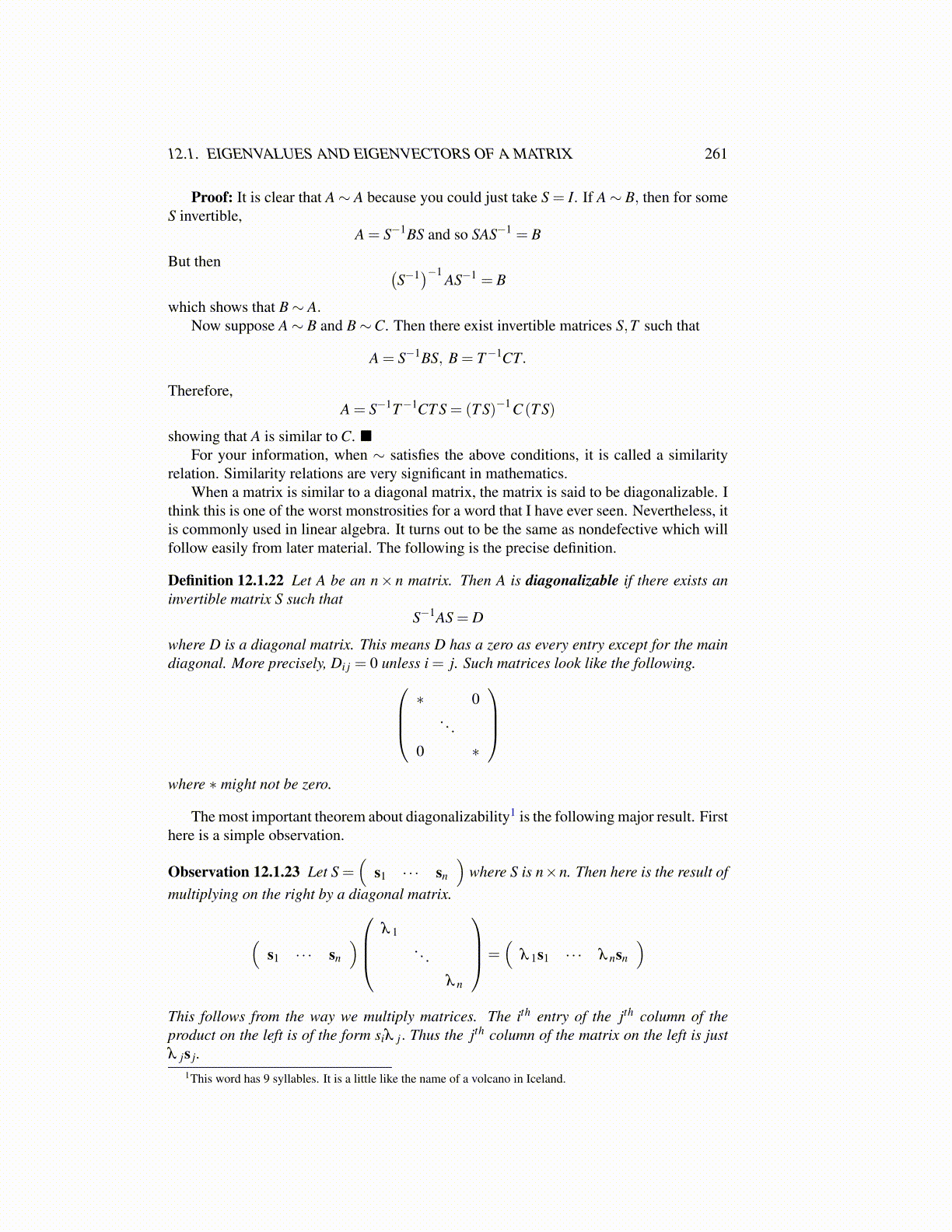
12.1. EIGENVALUES AND EIGENVECTORS OF A MATRIX 261
Proof: It is clear that A∼ A because you could just take S = I. If A∼ B, then for someS invertible,
A = S−1BS and so SAS−1 = B
But then (S−1)−1
AS−1 = B
which shows that B∼ A.Now suppose A∼ B and B∼C. Then there exist invertible matrices S,T such that
A = S−1BS, B = T−1CT.
Therefore,A = S−1T−1CT S = (T S)−1 C (T S)
showing that A is similar to C. ■For your information, when ∼ satisfies the above conditions, it is called a similarity
relation. Similarity relations are very significant in mathematics.When a matrix is similar to a diagonal matrix, the matrix is said to be diagonalizable. I
think this is one of the worst monstrosities for a word that I have ever seen. Nevertheless, itis commonly used in linear algebra. It turns out to be the same as nondefective which willfollow easily from later material. The following is the precise definition.
Definition 12.1.22 Let A be an n× n matrix. Then A is diagonalizable if there exists aninvertible matrix S such that
S−1AS = D
where D is a diagonal matrix. This means D has a zero as every entry except for the maindiagonal. More precisely, Di j = 0 unless i = j. Such matrices look like the following.
∗ 0. . .
0 ∗
where ∗ might not be zero.
The most important theorem about diagonalizability1 is the following major result. Firsthere is a simple observation.
Observation 12.1.23 Let S =(
s1 · · · sn
)where S is n×n. Then here is the result of
multiplying on the right by a diagonal matrix.
(s1 · · · sn
)λ 1
. . .
λ n
=(
λ 1s1 · · · λ nsn
)
This follows from the way we multiply matrices. The ith entry of the jth column of theproduct on the left is of the form siλ j. Thus the jth column of the matrix on the left is justλ js j.
1This word has 9 syllables. It is a little like the name of a volcano in Iceland.